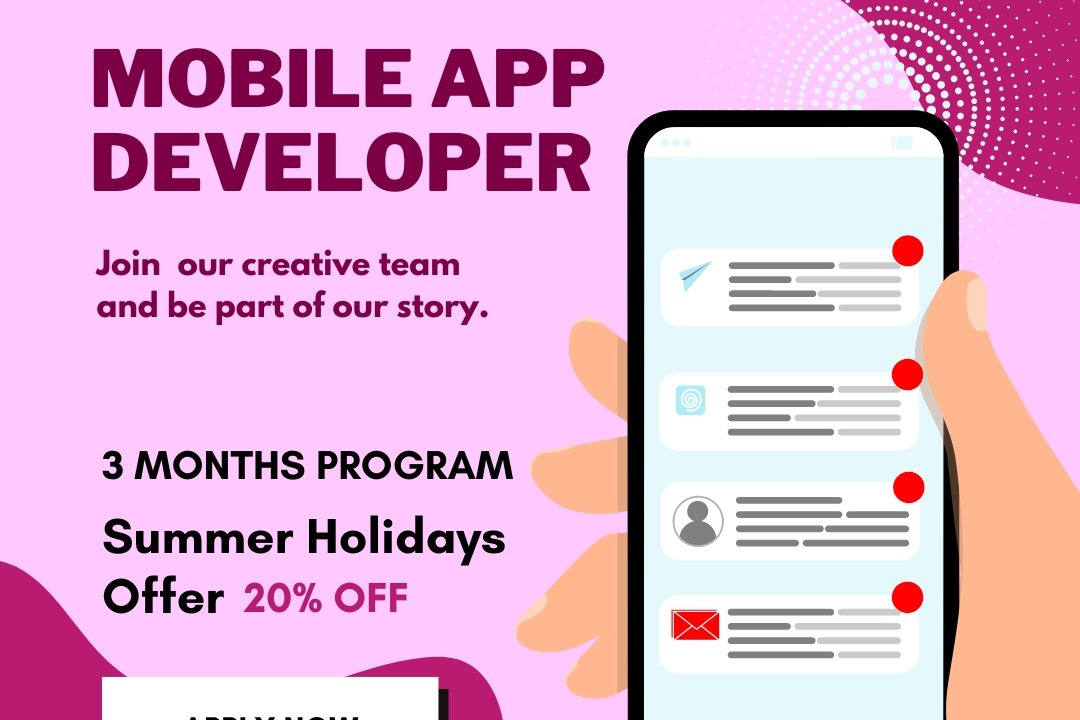Android App Architecture
Optimizing Android App Architecture for Scalability and Maintainability
Android App Architecture
Android app architecture refers to the structured framework that dictates how components within an Android application interact and function together efficiently. A common approach incorporates a layered architecture that includes the Presentation layer (UI components), the Domain layer (business logic), and the Data layer (data management and persistence). Popular architectural patterns such as Model-View-ViewModel (MVVM) or Model-View-Presenter (MVP) are often used to separate concerns, making the app easier to maintain and test. The incorporation of libraries like Jetpack components (LiveData, ViewModel, Room) also enhances app architecture by providing lifecycle-aware components and a robust way to manage UI-related data in a lifecycle-conscious way, leading to a streamlined and responsive user experience.
To Download Our Brochure: https://www.justacademy.co/download-brochure-for-free
Message us for more information: +91 9987184296
1 - Model View ViewModel (MVVM): This architecture promotes separation of concerns by dividing the app into three main components. The Model holds the data, the View displays the data, and the ViewModel acts as a bridge between them, handling the logic.
2) Repository Pattern: The repository serves as a single source of truth for data, managing data from both local databases and remote sources. This pattern helps in centralizing data access and enhances code maintainability.
3) LiveData: LiveData is an observable data holder class that helps UI components respond to data changes lifecycle aware. It ensures that UI elements only update when they are in an active state.
4) Room Database: Room is an abstraction layer over SQLite that simplifies database interactions. It provides compile time checks of SQL queries and supports object mapping, making local data management more efficient.
5) Data Binding: This feature allows you to define UI components in XML and bind them to data sources in a declarative way. It reduces boilerplate code by automatically updating the UI as data changes.
6) ViewModel: ViewModel is responsible for preparing and managing the data for an Activity or Fragment. It survives configuration changes, ensuring that the UI related data is retained during lifecycle events.
7) RecyclerView: RecyclerView is a flexible view for displaying large data sets. It provides better performance due to its view recycling mechanism, allowing for efficient displays of lists and grids.
8) Fragment: Fragments are reusable UI components that can be added or removed to/from activities. They promote modularization and help manage UI components more effectively.
9) Navigation Component: This component simplifies navigation within the app, allowing you to define all navigation paths in a single Navigation Graph and automating fragment transactions.
10) Coroutines: Kotlin coroutines are used for managing background threads while keeping the code simple and readable. They help in performing asynchronous tasks without blocking the main thread.
11) Dependency Injection: Libraries like Dagger or Hilt are used for dependency injection, allowing for easier management of object creation and dependencies within the app, leading to clean and testable code.
12) Networking: Using libraries like Retrofit for API calls allows for easy and efficient HTTP requests. Combined with Gson or Moshi, it simplifies JSON parsing and makes data handling straightforward.
13) Testing: Android architecture promotes testing at different levels including unit testing, UI testing, and integration testing, ensuring code quality and reliability through frameworks like JUnit and Espresso.
14) WorkManager: This component is designed for deferrable and guaranteed background work. It manages background tasks efficiently, even if the app is not running, and respects the device's battery optimizations.
15) Modularization: By splitting the application into distinct modules (e.g., feature modules), it allows for better organization, faster build times, and reusability of components across different projects.
16) Security best practices: Implementing features like secure network communication (HTTPS), data encryption, and using Android’s security features (like Keystore) enhances the app's security posture.
17) User Interface Design: Following material design principles ensures that your app has a consistent look and feel across different devices, enhancing user experience and usability.
18) Testing & Continuous Integration: Utilizing CI/CD tools to automate testing and deployment processes helps ensure that new code changes do not introduce bugs and that the app stays up to date.
By incorporating these topics, your training program can provide a comprehensive understanding of Android app architecture, preparing students to build robust and maintainable applications.
Browse our course links : https://www.justacademy.co/all-courses
To Join our FREE DEMO Session: Click Here
Contact Us for more info:
list of java training institutes in pune
Flutter Training in Soyagaon
Mean mern stack
Cheapest Online iOS Training Institute in Delhi
best java training institute in patna











